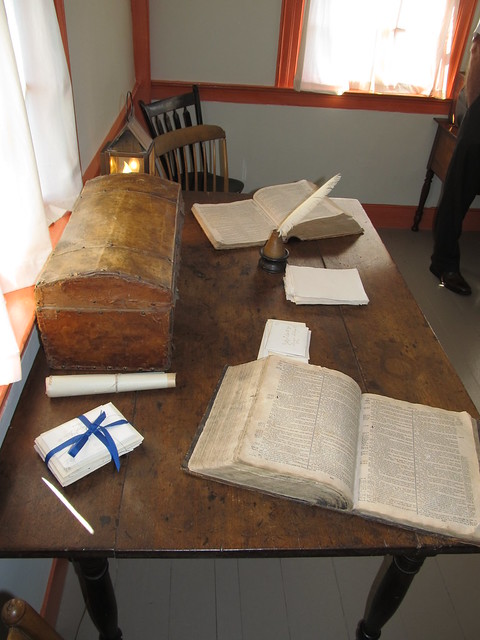 |
| Joseph Smith's office at the John Johnson farm, where he performed some of his Biblical translation. |
I am fascinated with the history of Biblical translation, and
the Joseph Smith Translation (JST) is no exception. For those who are unaware, Joseph Smith not only translated the Book of Mormon, but parts of the Bible as well, according to revelation from God. While this translation may appear to be the most
audacious of all previous translation projects, I myself believe that
Joseph Smith was a modern prophet, and consider his work to be
inspired. Therefore, my thoughts will be from this perspective.
In examining the longer portions of the Joseph Smith's
translation of Genesis, I have been very interested in examining why certain
passages were chosen to be expanded upon. In studying these portions, these are my thoughts so far:
1. Doctrines of Jesus Christ have been in place for thousands of years.
JST Genesis 17:4-7 further indicates that baptism was known to Abram (later Abraham). These same verses, along with verse 11, prove that Abram was taught that children should not be baptized before eight years old (compare these verses to Mormon 8 from the Book of Mormon).
2. It further clarifies the relationship of the Bible with the Book of Mormon.
Comparing 2 Nephi 3 and JST Genesis 50 is fascinating, as they both contain Joseph of Egypt's prophecies of his descendents. 2 Nephi 3 prophesies of Joseph Smith bringing the gospel of Jesus Christ in modern times. Genesis 50 has that exact same prophecy: even 2 Nephi 3:12 and and JST Genesis 50:31 are the same wording.
In Genesis 50 however, Joseph speaks of not one, but two of his descendents, the ancient prophet Moses and the modern-day Joseph Smith, a very interesting juxtaposition. Why? Because tradition says that Moses wrote the first five books of the Old Testament (the Torah) as well as establish the Law of Moses. Joseph Smith, also brought forth new scripture as well, the Book of Mormon.
Note the following verses of JST Genesis 50: 27-28, 30:
This is a description of Moses' mission:
27 Thus
saith the Lord God of my fathers unto me, A choice seer will I raise up
out of the fruit of thy loins, and he shall be esteemed highly among
the fruit of thy loins; and unto him will I give commandment that he
shall do a work for the fruit of thy loins, his brethren.
What exactly is this "work"?
28 And
he shall bring them to the knowledge of the covenants which I have made
with thy fathers; and he shall do whatsoever work I shall command him.
So Moses is sent to do a work for God: teach others of their covenants with God, which the law of Moses accomplishes. Compare the previous verses to Joseph Smith's description:
30 And
again, a seer will I raise up out of the fruit of thy loins, and unto
him will I give power to bring forth my word unto the seed of thy loins;
and not to the bringing forth of my word only, saith the Lord, but to
the convincing them of my word, which shall have already gone forth
among them in the last days;
The Book of Mormon's title page (written by an ancient American prophet named Mormon) shows that the Book of Mormon's primary purpose is to "the convincing...that Jesus is the Christ, the Eternal God." From the description of Joseph Smith's mission in JST Genesis 50: 30, this principle is more readily apparent. Joseph Smith was not only meant to expound upon God's word in modern times, but to convince us of it, through bringing a second witness of God's word that Moses had already provided: the Book of Mormon. I am grateful that the JST taught me that there was more of a connection between Moses and Joseph Smith than I was aware of.
That's so cool thanks for that!
ReplyDeleteThanks Kimberly! :)
ReplyDelete